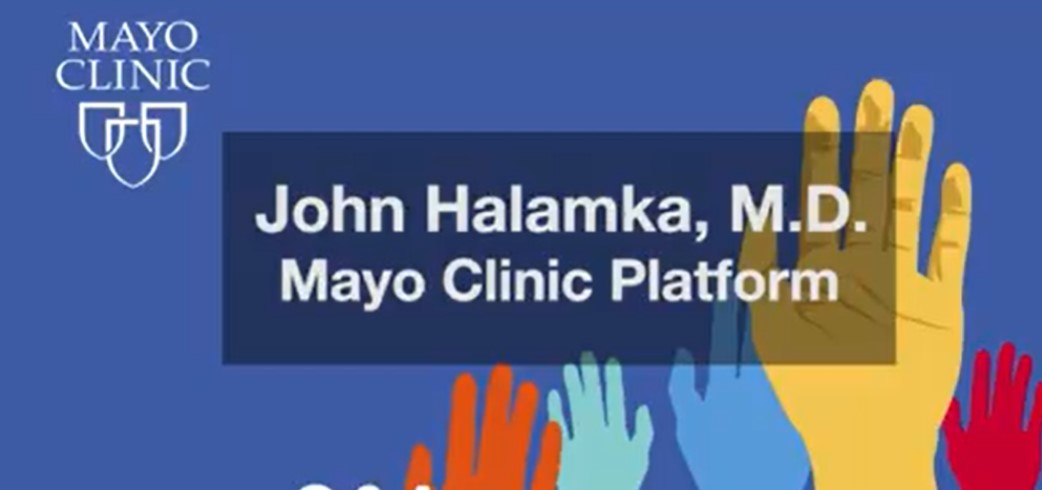Innovation is best scaled when pipelines are replaced with platforms.
geekdoctor.blogspot.com
John Halamka, M.D., president, Mayo Clinic Platform, and Paul Cerrato, senior
MONDAY, JUNE 28, 2021
John Halamka, M.D., president, Mayo Clinic Platform, and Paul Cerrato, senior research analyst and communications specialist, Mayo Clinic Platform, wrote this article.
The Digital Health Frontier includes cutting edge predictive analytics, machine learning enhanced algorithms and big data analytics.
But for these innovations to have their full impact on patient care requires the right strategic and operational foundation.
In the past, many technology-focused organizations have relied on a pipeline approach as the foundation to construct innovations and promote growth.
But history suggests this approach is less sustainable than a platform approach.
A recent article inHarvard Business Review(HBR) sums up the difference:
- “ Platform businesses bring together producers and consumers in high-value exchanges.
Their chief assets are information and interactions, which together are also the source of the value they create and their competitive advantage….
- Pipeline businesses create value by controlling a linear series of activities — the classic value-chain model.
Inputs at one end of the chain (say, materials from suppliers) undergo a series of steps that transform them into an output that’s worth more: the finished product.”
While this explanation gets the point across, it’s rather abstract.
To really appreciate the advantages of one approach over the other, we need an example or two.
Apple’s handset business follows the pipeline model, making sure there are adequate supplies available to build the device and then overseeing the various other steps to create a finished iPhone, as well as its distribution, sales, and servicing.
But when Apple linked the phone to its App store, the situation changed dramatically, turning the operation into a sustainable platform that connected app developers with iPhone owners.
In their HBR article, Geoffrey Parke and Sangeet Paul Choudary explain:
- “The resource-based view of competition holds that firms gain advantage by controlling scarce and valuable — ideally, inimitable — assets.
- In a pipeline world, those include tangible assets such as mines and real estate and intangible assets like intellectual property.
- With platforms, the assets that are hard to copy are the community and the resources its members own and contribute, be they rooms or cars or ideas and information.”
Apple’s success and the loss of market share by pipeline-oriented companies like Nokia can be explained by such differences.
Like Apple, John Deere has successfully employed a platform approach .
They own not just the physical assets — e.g. tractors and combines — but a vast collection of intellectual property — including APIs and apps to help farmers manage what is now being called precision agriculture.
The company links third party providers and producers to their farming customers and reaps the benefits. With all these technological tools in place, farmers now have the ability to more efficiently monitor their equipment with data on fuel consumption, location, machine hours, and engine RPMs; and they can improve crop management with weather prediction data, community pricing and the
like. Some of John Deere’s more advanced combines incorporate a grain quality camera, grain loss sensor, a Gen4 display monitor, and remote access to an operations center from inside the cab.
For every new connected tractor sold, more data flows into the John Deere Platform, enhancing the value of the platform to partners creating new apps and analytics.
Mayo Clinic Platform (MCP) is taking a similar approach.
Instead of creating dozens of pipeline businesses or building an organization chart to support pipeline businesses, we are leveraging external collaborators, network effects, and data flowing back to the Platform, which increases its value for producers of products and consumers of services.
Instead of creating dozens of pipeline businesses or building an organization chart to support pipeline businesses, we are leveraging external collaborators, network effects, and data flowing back to the Platform, which increases its value for producers of products and consumers of services.
Mayo Clinic and Commure, a General Catalyst portfolio health care technology company, have launched Lucem Health to connect data from remote medical devices with AI-enabled algorithms.
External collaborators who have partners with MCP include nference, Medically Home, Kaiser Permanente, and K Health.
The strategic approach allows the Mayo Clinic Platform to offer products and services that fall into 4 broad categories of functionality: Gather, Discover, Validate, and Deliver.
For example, in the Deliver “bucket” is the combined ECG/algorithm system that was recently validated and published in Nature Medicine.
The digital tool was able to detect low ejection fraction, thereby improving the diagnosis of left ventricular systolic dysfunction. While the ECG/algorithm is improving direct patient care at Mayo Clinic, it can also be offered to external partners and embedded in their ECG waive form viewer, which in turn will improve the relationship between a community hospital and its patient population.
Similarly, the clinical data analytics tools developed by MCP are being made available to outside partners like , which provides symptom checking, access to virtual visits with a clinician.
The data analytics function is helping K Health improve its services to their clientele.
As the HBR article emphasized, the chief assets of a platform are information and interactions, which together are also the source of the value they create and their competitive advantage. Such value and advantages are what will sustain healthcare innovators through the next several decades.
… the chief assets of a platform are information and interactions, which together are also the source of the value they create and their competitive advantage.
Such value and and advantages are what will sustain healthcare innovators through the next several decades.
About the author
As president of the Mayo Clinic Platform, I lead a portfolio of new digital platform businesses focused on transforming health by leveraging artificial intelligence, the internet of things, and an ecosystem of partners for mayo clinic.
This is made possible by an extraordinary team of people at mayo and collaborators worldwide. this blog will document their story.
Originally published at http://geekdoctor.blogspot.com.












